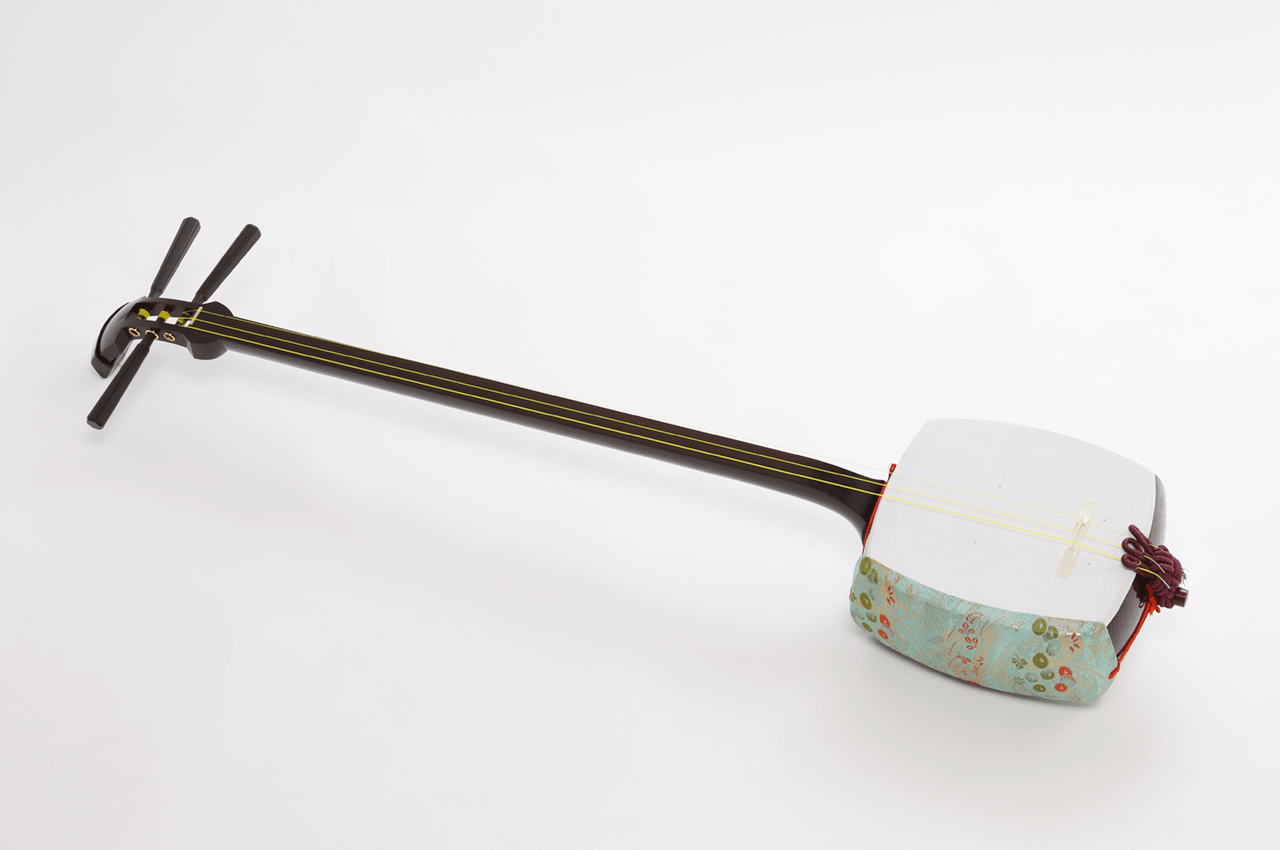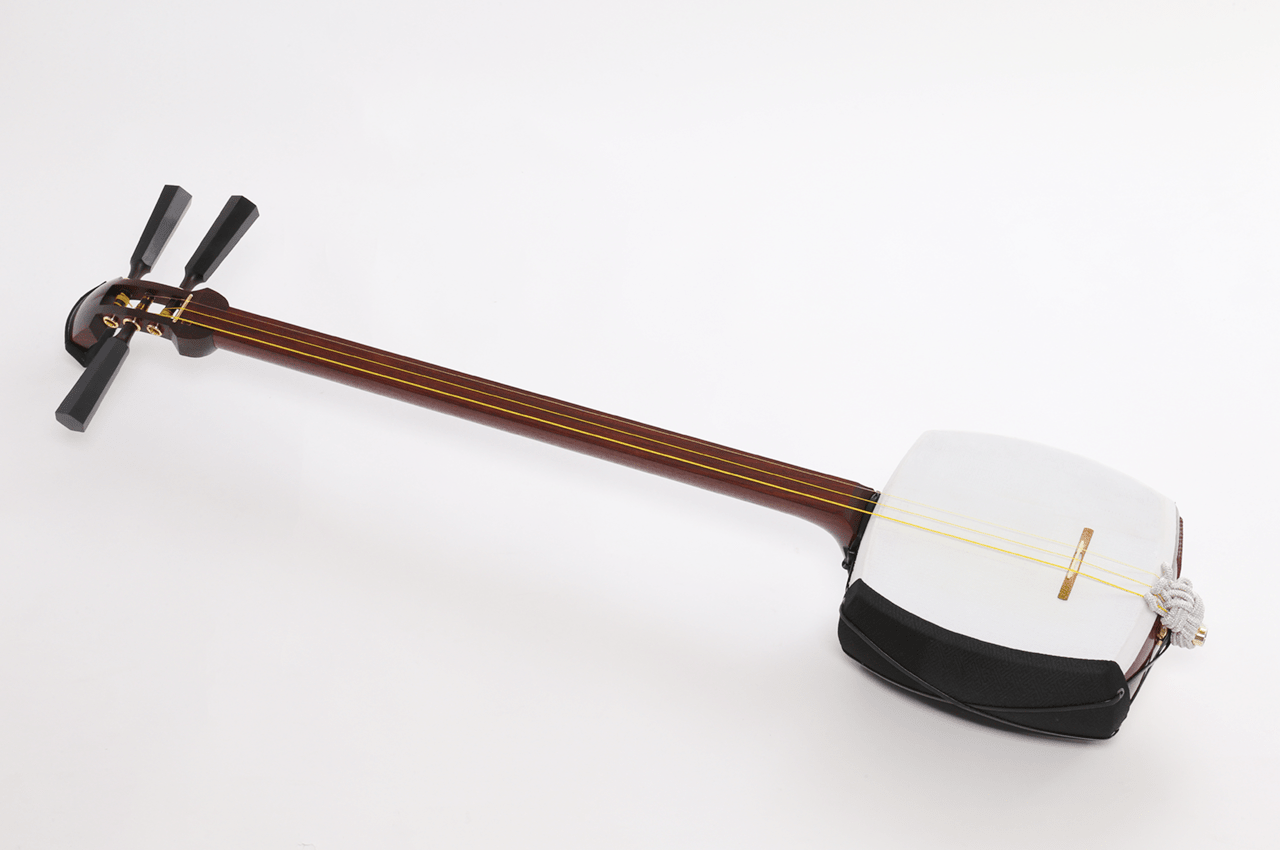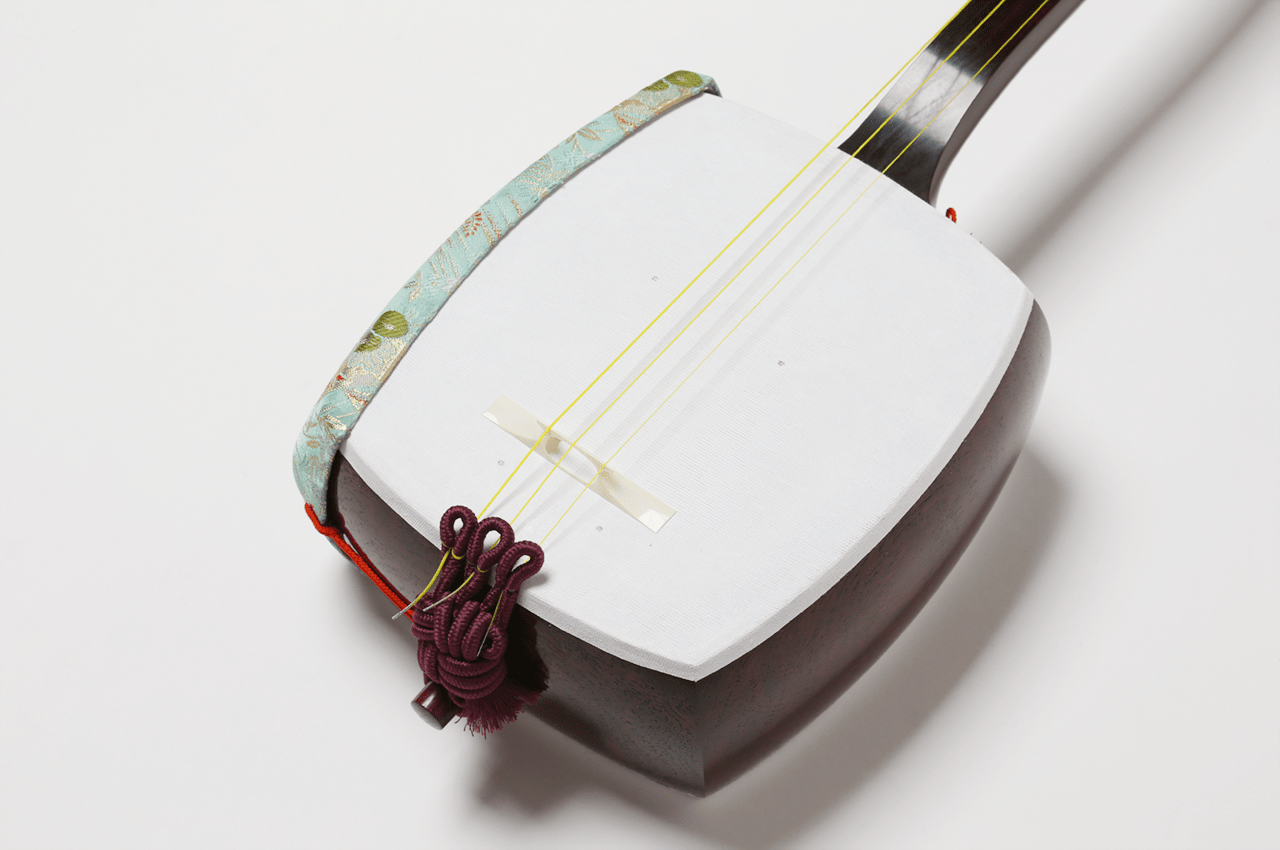ABOUT SHAMISEN
A shamisen is a Japanese traditional musical instrument with three strings stretched from the body “Dou”.
It is said that a Chinese-originated musical instrument became a Ryukyu-sanshin, which turned into a shamisen. However, the historical origin of the shamisen is not clear.
Omi Ishimura was a famous shamisen craftsman in the Edo era. The shamisens in the Edo era were, different from most modern shamisens, excellent as works of art decorated with Japanese lacquer, such as “Makie”.
The shamisen is …
A musical instrument that moves the soul of the Japanese people.
The sound of the shamisen may be encoded in the DNA of the Japanese people.
So it would attract the mind of the Japanese people.
Komatsuya considers itself as a company that fulfills its mission of handing this Japanese traditional musical instrument, the shamisen, down to following generations.

Nagauta-shamisen
It is characterized by a beautiful curve, called “Hatomune” (literally “pigeon’s breast”) below the neck (“Sao”).
The Nagauta-shamisen is generally famous as an accompanying musical instrument in “Kabuki”, but also played in Ogie-bushi tunes and Awa-odori festivals.
The Nagauta-shamisen can serve as an indicator of size for shamisen manufacturers.
For example, when the body of the Tsugaru-shamisen is larger by 5 bu (which represents a traditional Japanese dimensional unit; 5 bu ≈ 15 mm), it means that the body is 5 bu larger than that of the Nagauta-shamisen.

Tsugaru-shamisen
The largest of the shamisen family, which produces dynamic sounds.
The “Sawari” (meaning a mechanism that adds characteristic higher harmonics emphasized to the vibration of the 1st string “Ichinoito”) is classified as “Azuma Sawari”, which is characterized by easy adjustment of the “Sawari” using a hardware screw.
The shamisen is primarily used as an accompanying musical instrument, but a Tsugaru-shamisen is often played as a solo musical instrument like a guitar.
- Ripple -
A next-generation artificial skin for the shamisen

The Ripple, an artificial skin for the shamisen, is a product developed by the President of Komatsuya, who was inspired in his childhood by a folding chair made by his elder brother.
On one day in his childhood, he was impressed by a bouncing sound made by flipping a finger against the cloth that covered the seat of the folding chair, when the cloth was so tight while the folding chair was extended.
When the President attempted to find a substitute for a real skin for the shamisen, that memory inspired the President with an idea for the shamisen skin “Ripple”.
From that starting point, research and development have been initiated to create the original artificial skin Ripple.
The development of the Ripple continued for a number of months, during which we worked day and night in the company workshop.
It took us a tremendous amount of time of trial and error for Ripple attachment hundreds of times, to achieve a sound as close as possible to the quality of the genuine sound produced by real skin.
Sometimes, the Ripple was torn apart during the process.
It was not once or twice.
Finally, our efforts were rewarded, and the artificial skin Ripple was launched as part of a practical application for a trial period in July 2015.
The name, “Ripple”, is based on the word “ripple” in English, as the President wishes to achieve an agreeable sound of ripples like small waves in the water.
In November 2015, the shamisen skin Ripple was officially launched to the market with the cooperation and support of organizations and suppliers.

